
The search engine marketing world approaches SEO and PPC as entirely different strategies (and yes, they are different in many ways).
SEO focuses on optimizing a website to get traffic from organic search results.
Search Engine Marketing (SEM), on the flip side, targets getting visibility or traffic from paid search.
In other words, Google’s search results split into two:
- The paid search results
- The organic search results

SEM marketing aims to rank your website in the paid search results and drive immediate traffic from highly qualified keywords using Pay Per Click (PPC).
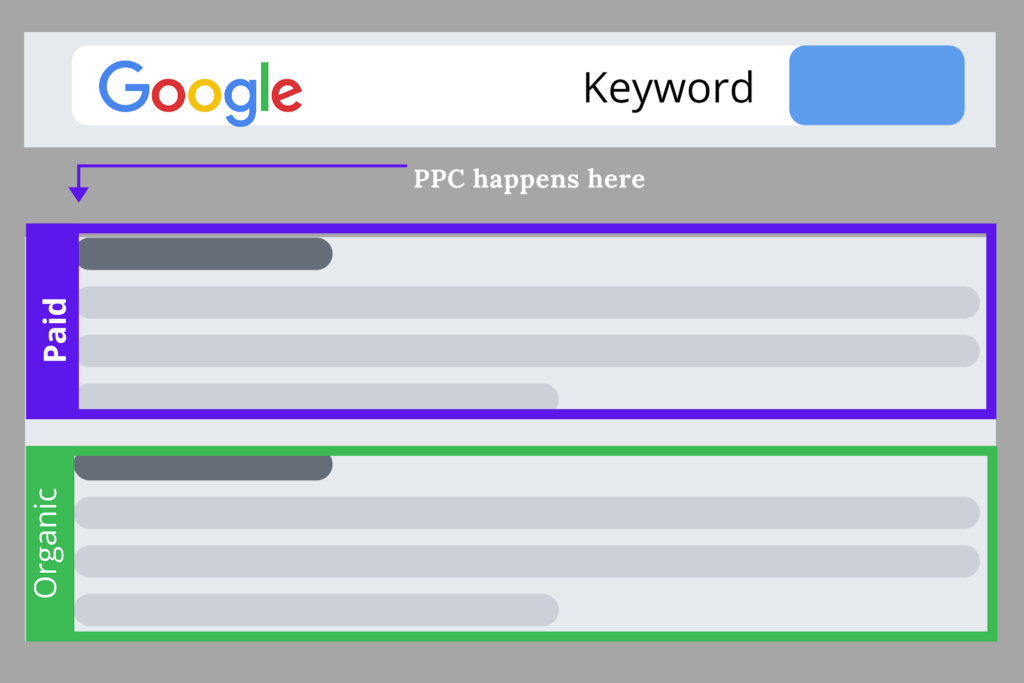
SEO focuses 100% on ranking on the organic non-paid search engine results for free traffic.

However, considering SEO and PPC as two sides of the same coin — search — can be helpful. SEM marketing compliments SEO in many ways, and combining them can lead to a more successful search strategy.
FREE traffic is available for all businesses, but it isn’t possible to get a guaranteed top search spot.
The coveted first spot gets about 30% of the click, and when you aren’t in the top-five position, you’re essentially invisible.
For that reason, many businesses invest in PPC campaigns to get to the top spot in the search and get traffic while spending dollars.
After all, ⅔ of clicks go to paid results for commercial keywords (the revenue-driving search terms).
Even more interesting, Google is expanding its text ads. The expanded ads occupy 2X the standard text ad and take up the fool-proof way to get tremendous brand exposure.
Your business would want to embrace a multi-channel strategy that integrates PPC campaigns with SEO campaigns to provide a great maneuver to gain visibility and authority in your customer’s eyes.
Plus, the combination reduces your customer cost per acquisition.

The question that brings everything into perspective, however, is:
How do you combine SEO and SEM to launch a full on-search marketing campaign that gets you immediate traffic from highly qualified keywords and organically rank for them in time?
It’s a hefty task, and if you’re going to write content for yourself, optimize it for the Search Engine (SEO), and manage your Google Ads account (PPC) for yourself, your business is likely to suffer.
Being an SEM manager, SEO manager, and content creator — at the same time — is too much for one person.
If you have a staff to manage PPC and SEO, you’re set to go for SEM SEO. Otherwise, you should pick one or hire a digital marketing agency to help you increase your revenue through combined SEO and SEM.
That said, SEM SEO marketing starts with creating a profitable Google Ads Campaign and ends with setting an SEO-friendly landing page.
#1. Create a Profitable Google Ads Campaign (from Scratch)

Launching an SEM campaign can be an exhilarating process.
However, you’d want to ensure that every campaign deposits more money into your bank account rather than funding the Google empire.
When set up correctly, Google Ads is one of the best sources for new leads and increasing sales.
Let’s get down to it.
SEM Step #1. Target Revenue-Generating Keyword(s)

Before starting any Google Ads campaign, you must verify the search volume for a keyword you’re targeting. There is no need to go for keywords that no one is searching for.
There are plenty of ways to know a keyword’s search volume. However, Google Keyword Planner is the best tool to use to understand what people are searching for.
The tool is a 100% free tool but gives you detailed insights into what people are searching on Google, gets you bid estimates and total searches to make a plan. Use it to find the best revenue-generating keywords to target.
In essence, three questions will guide you on a keyword to advertise. Ask yourself:
- Are prospects in your target market searching for the keyword in the search engine? If there is no search volume, it means there are no chances of making profits when you invest in such a phrase. Do not invest in keywords no one is searching for.
- Are the people searching for your target keyword likely to spend money on your offer? Searchers of some keywords just research with no intention of making a purchase. You want to advertise on keywords with buying intent — where your searcher is looking to buy.
- Can you afford to advertise on the keyword? The Google Keyword Planner presents a bid range. Examine if it’ll suit your budget.
After addressing these three questions in your keyword research, you’d want to examine how the keywords perform.
SEM Step #2. Execute Competitor Analysis
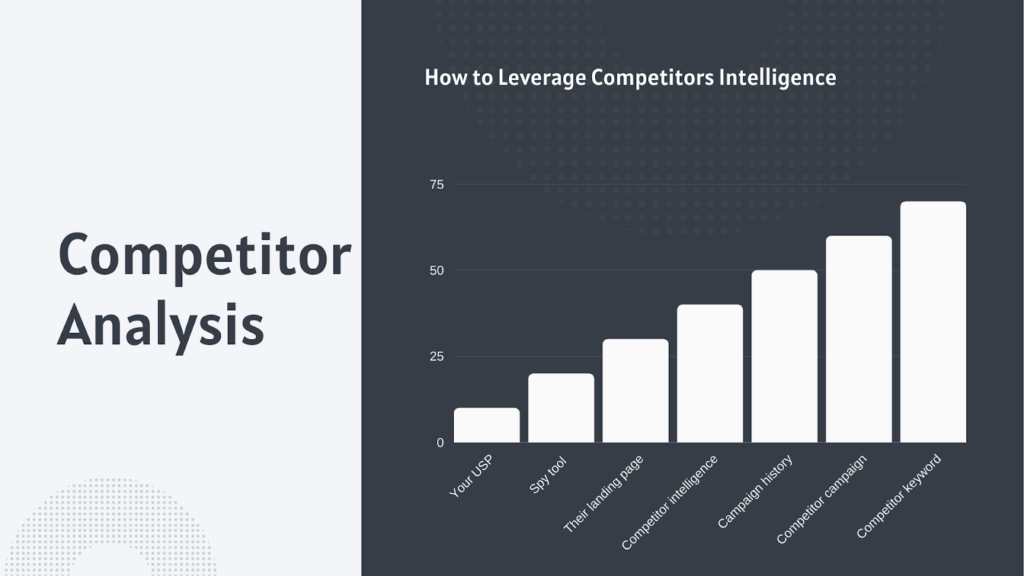
With a revenue-generating keyword, your next step would be to leverage your competitors’ intelligence.
Some of your competitors have tested and optimized Adword campaigns for the keyword you’re targeting. They already know which keywords, ads, and landing pages work and don’t work in your market.
You can skip lots of trials and errors and reduce your risk by analyzing your competitor’s intelligence.
Use a spy tool like KeywordSpy to collect, organize, and access all your competitor’s advertising information. KeywordSpy unveils all your competitors’ most profitable Ad copies and keywords. From there, you can examine what’s working and what’s not.
SEM Step #3: Tap Into a Powerful USP
Your unique selling proposition (USP) differentiates your business from the competition in the market and gives your prospect a compelling reason to choose you.
When it comes to search engine, a powerful USP is the marketing blue chip, and the reasons are simple:
- A powerful unique selling point generates more qualified leads and repels unwanted clicks on your ad
- A strong USP improve sales and conversion rates — you won’t only drive more traffic to your landing page, but you’ll also convert more of your traffic into paying customers
- A strong USP differentiates you from the cliche-infested competition, which can eliminate price comparison shopping. When your customers have a compelling reason to do business with you instead of your competitors, the price becomes a secondary issue.
But how do you create a powerful USP?
Focus on your core strength. What can you do better than your competition?
Then, talk to your customers. More importantly, listen to them. You’ll build the best USP on customers’ insights, so ask your customers why they do business with you. Find out what your customers dislike about your industry. Then, leverage that.
Even more, analyze your competitors because the integral word in Unique Selling Proposition is “Unique.” Study your competitor’s ad, website, marketing material, and identify an opportunity to stand out.
SEM Step #4: Create an Irresistible Offer

What can you offer in your AdWord campaign that’s compelling — such that your target can’t resist taking action? What offer can differentiate your brand from all the ads your target sees on Google search results?
Three components make an irresistible offer:
Great Value
Your offer should provide more value than its pricing — that’s the marketing blue chip.
Don’t confuse it by making a cheap offer. Instead, define all the value your service or product provides to your customers and ensure it outweighs your price tag.
Believable
Prospects get skeptical when your offer appears to be too good to be true. Doubts start creeping into their minds.
You have a formidable task of providing believable reasons for your offer. You can do this by using logic, proof, and careful communication.
Foolproof Guarantee
Nearly everyone is afraid to be ripped online.
For that reason, taking the risk out of the customer’s hands and put it on your hands compels prospects to take action. And one tactic to do that is providing a money-back guarantee.
Apart from eliminating the risk, a money-back guarantee shows confidence that your business will deliver quality service or product, or else return the money.
Strong but Simple Call-to-Action
Don’t expect your prospects to connect the dots or search through your website to figure out the next action — tell them what you want them to do.
Use a strong but simple call-to-action.
SEM Step 5: Create Compelling Ads

The above four steps are critical to creating profitable ads. If you get them right, creating the ad itself will be easy.
Clear as mud.
With Adword search advertising, you only pay when people click on your ads. Therefore, your ad has three formidable tasks:
- Attract qualified leads to click on your PPC ad instead of the competitors’ ads
- Repel unqualified traffic so that they don’t click and waste your ads budget
- Grow a high click-through rate (CTR) to skyrocket your Quality Score, which in turn lowers the Cost Per Click (CPC) of your keywords
That means more qualified traffic, increased sales, and less wasted money on unqualified leads.
The Adword text has four integral components you can utilize to create a compelling offer:
- Headline
- Description line 1
- Description line 2
- Display your URL
The Headline
The headline is an integral part of your ad because it’s the first thing your target will see.
Include your keyword in your ad’s headline because Google will bolden the text, which makes it stand out from other ads
Plus, a keyword on the headline is the easiest way to ensure you’re 100% relevant for the prospects searching.
What’s more, you can ask a question in the headline. If your prospects nod yes to your question, it’s more likely they to develop a chain reaction that leads to sales.
All in all, Google Adwords allows a 30-character headline. Ensure every letter in your headline counts.
The Two Description Lines
In the two description lines, present your offer, speak your USP, provide social proof, and include your call-to-action.
You only have 35 characters for each description. As in your headline, every word should count.
The Display URL
Many people overlook the Display URL feature in Ads.
Avoid copy-pasting your domain name. Instead, customize it with your offer, call-to-action, your USP, or anything that makes your offers stand out.
For instance, if your website is weightloss.com and you’re selling a keto recipe, you can customize it like:
- weightloss.com/ketorecipe
- weightloss.com/easyketorecipe
- weightloss.com/quickketorecipe
With that, your Adword campaign should be set for publishing. However, you’ll need to work on your landing page before hitting the Enable button.
#2. Create a Dedicated Landing Page and Optimize it for Search Engine

Imagine your target audience has searched for your offer, and they have found you. They have clicked on your ad on Google and are now on your website.
What now?
Are your leads now on your homepage — wondering and trying to comprehend what happened because your ad promised what your home page couldn’t deliver?
Your home page is excellent in telling everything your business does and telling about customers you’ve served. But it isn’t relevant to the prospects who searched for the keyword you advertised.
Your home page isn’t a landing page.
You need to create a conversion-driven landing page, then optimize it around the keyword you’re advertising on your PPC campaign. The goal is to make the entire sale process congruent to assure your leads that they’re going down the right path.
Even more, the landing page presents a rare opportunity to integrate SEO into PPC.
Why Combine PPC and SEO?
While PPC is excellent in generating instant qualified leads, it’s 100% paid for. In that case, you’re spending cash upfront.
When you stop paying for PPC, your traffic goes to zero.
That’s why integrating SEO to PPC campaigns instantly ranks for highly qualified keywords and organically ranks for them in time is a smart move.
When you rank for a keyword with SEO, you’re pretty set — you don’t need to invest a lot of money into maintaining your current ranking.
However, SEO takes time and work — especially when your site is new and doesn’t have plenty of backlinks.
According to Ahrefs’ analysis, it takes an average of two years to rank on the first page of Google. Many top-ranking pages were first published 3+ years ago, but that doesn’t mean you should take two years to rank on Google. If you target long-tail keywords and implement the best SEO practice, you can start to see results within months.
Let’s start with the SEO basics.
What’s SEO?
SEO is the practice of constant optimization of a page or website to rank for in the organic non-paid search engine result pages (SERPs). Google uses 200+ ranking signals in their algorithm.
SEO divides into three main categories:
- On-page SEO
- Off-Page SEO
- Technical SEO
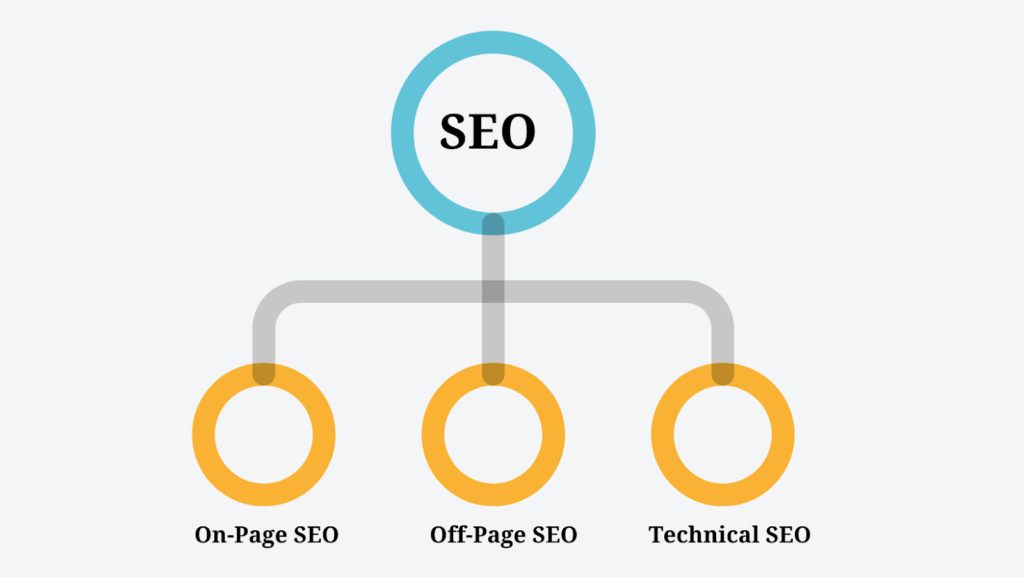
Here’s how to utilize each SEO category to optimize your landing page to rank for the keyword you target on the SEM campaign.
SEO Step #1. Execute On-Page SEO for Your Landing Page
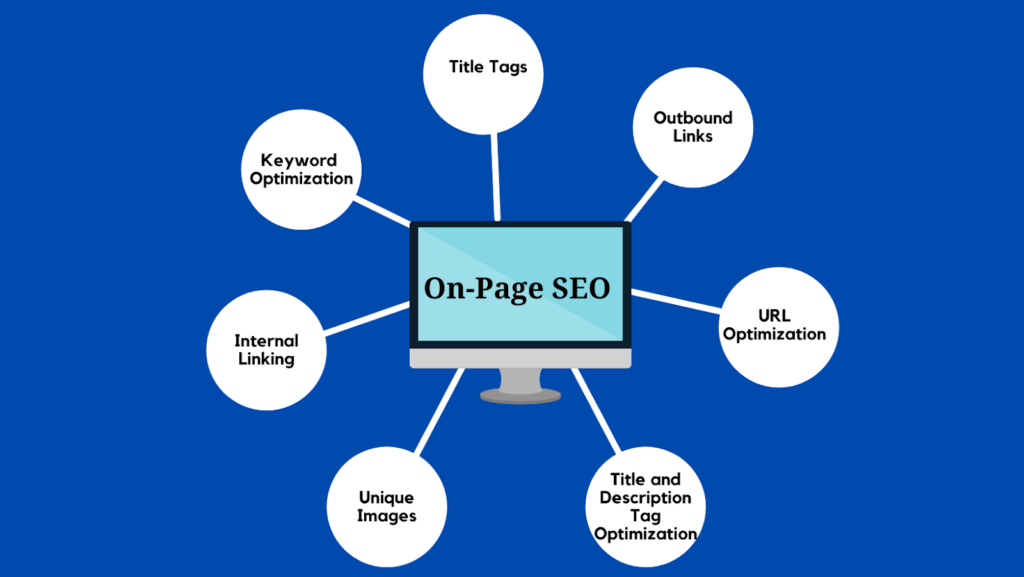
On-page SEO, (also on-site SEO) is the practice of optimizing a web page around the keywords that your prospects search for in search engines — Google, Yahoo, or Bing.
At its core, on-page SEO entails optimizing page content, title tags, outbound linking, and internal linking.
In brief, below are the top on-page practices for your landing to rank naturally for your target keywords:
Optimize Page Content Around Your Target Keyword
- Use target keywords in the first 100 words of your landing page because Google puts more weight on words that show up early on your page.
- Use the 1 title tag for your page’s headline. It isn’t specifically critical in ranking, but Google uses it to understand the structure of your landing page.
- Use H2 tags for subheadings. H2 tags don’t break or make your on-page SEO, but they are integral for search engine bots when trying to understand your page.
- Use your target keyword more often to confirm your page’s topic to Google. However, don’t stuff your keyword. Instead, use your keyword naturally a few times.
- Use external (outbound) links to related pages to help Google figure out your page’s topic
- Optimize your URL for SEO. Not because it matters a ton for the search engine, but because your URL shows up on top of your title on Google. Here’s how you create SEO-friendly URLs:
- Make short URLs
- Include a keyword in the URL
Next, optimize your title and description tags.
Optimize title and Description Tags
Google says that title tags help a lot with your ranking.
Use unique keyword-rich meta descriptions. Even though Google can override your meta description, the Google Starter guide suggests adding meta-tags to each of your pages because when Google doesn’t find the right collection of text to use as a snippet. Good meta tags help your results stand out, boosting your organic Click Through Rate (CTR).
Write SEO Content
Now it’s time to publish a landing page that deserves 1st position on Google. The content on the page you’re driving traffic to should be:
- Valuable to your target (add images, screenshots, make your content more engaging, updated materials like brands new strategy, or expert authorship)
- Unique (add a new tip or strategy, make a better list of curated resources, use strong design and UX)
- Optimized for search intent (spend more time looking for search intent for the keyword you’re targeting to not only make you rank on top of Google but keep you there with time)
Use Original Images
Only use original images on the page you’re driving traffic to. While stock photos are free, they hurt your page’s SEO.
The reason is simple.
When using stock photos, you’re using photos that a thousand other sites use.
Link internally
Internal linking is huge for SEO. Link from high-authority pages on your website because it helps create your website’s hierarchy and helps visitors stay longer to your website.
SEO Step #2. Off-Page SEO Your Page
Apart from on-page SEO, Google considers some off-site signals. These are things that don’t happen on your landing page. It’s majorly building backlinks because you use links to determine how valuable your landing page is.
It’s challenging to build authority backlinks for a landing page. However, there are other off-page signals you can use:
- Social media share
- Local SEO
- E.A.T (Expertise Authority)
- Branded searches
- Online reputation signal
Off-page SEO supplements on-page SEO.
SEO Step #3. Technical SEO the Page You’re Driving Traffic To
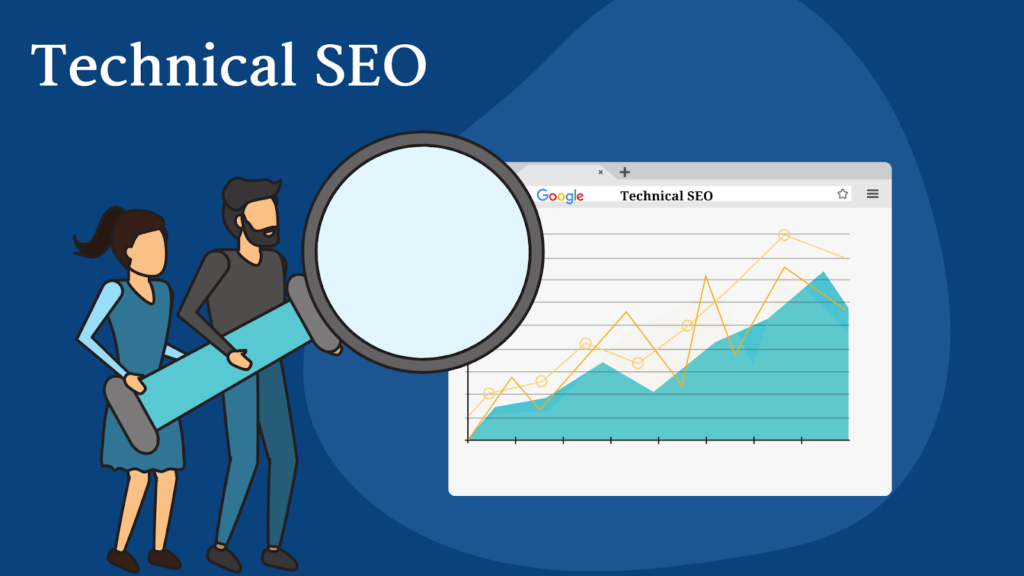
Technical SEO is improving the technical aspects of the overall website to increase the ranking of your landing page. This is where you ensure Google and other search engines can crawl and index the landing page and all pages on your site.
It entails making sure your landing page:
- Loads faster
- Is crawlable for search engines
- Have no dead link
- Doesn’t have duplicate content
- Is secure (has SSL certificate)
- Have Hreflang tags if you’re targeting multiple countries that use the same language
Once your landing page is set, it’s time to finalize your ads campaign setup and publish it. Put your conversion tracking in place, set the bidding, and enable your campaign.
However, you can’t relax yet because your ad might require optimization to keep it profitable.
Get Pristine SEM SEO Campaigns
By now, your SEM SEO campaign should be set. You should be on your way to driving immediate traffic from highly qualified keywords and waiting to rank for them organically in time.
However, it’s an excruciating task — especially when creating the content yourself,optimize it for a search engine, and manage Google Ad accounts for yourself.
Being a content creator, SEO manager, and SEM manager at the same time is too much for one person. If you don’t have a team, hire an SEM SEO agency to get you pristine Google ads and a search engine optimized landing page that attracts the right customers, increases sales, and creates irresistible brands.


